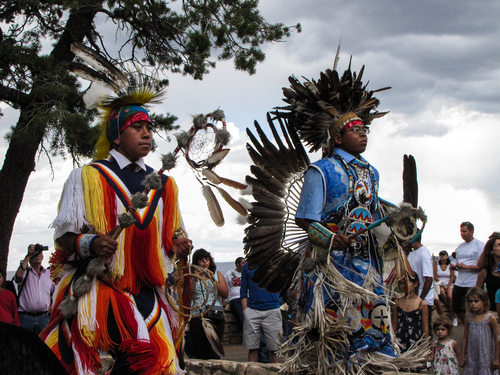Recent Relations
|
|
The allotment system was ended by the Indian Reorganization Act of 1934, which also solidified tribal rights to self-rule and supported the freedom of Native Americans to practice their own religions. This ushered in a period of self-rule for Native American tribes. However, this period was not to last—after World War II, a new sense of nationalism emerged and some extreme conservatives saw Native American sovereignty as a threat to U.S. sovereignty. (Remember: this is the McCarthy era!). In 1953, termination became the official policy of the U.S., when a resolution designed to "free Indians" (from reservation lands and tribal rule) unanimously passed Congress. More than 100 tribes lost their reservation lands from this process, though only one tribe—the Southern Paiute bands in Utah—in the Southwest was affected. The U.S. spent a million dollars to relocate Indians from reservations to cities, and did away with the tribal sovereignty rights.
In the 1960s, the pendulum swung back the other way, and the policy of termination was overturned by Richard Nixon (who, interestingly, had a record of supporting and expanding Native American rights). Since that time, there have been numerous laws and presidential proclamations passed supporting the rights of tribal sovereignty, and acknowledging the special relationships of Native Americans to the U.S. government. |

